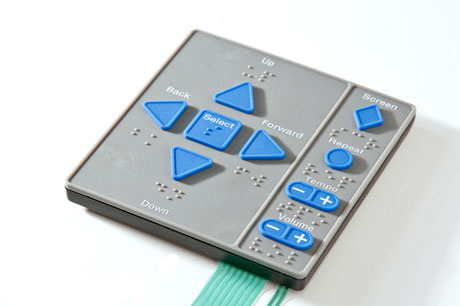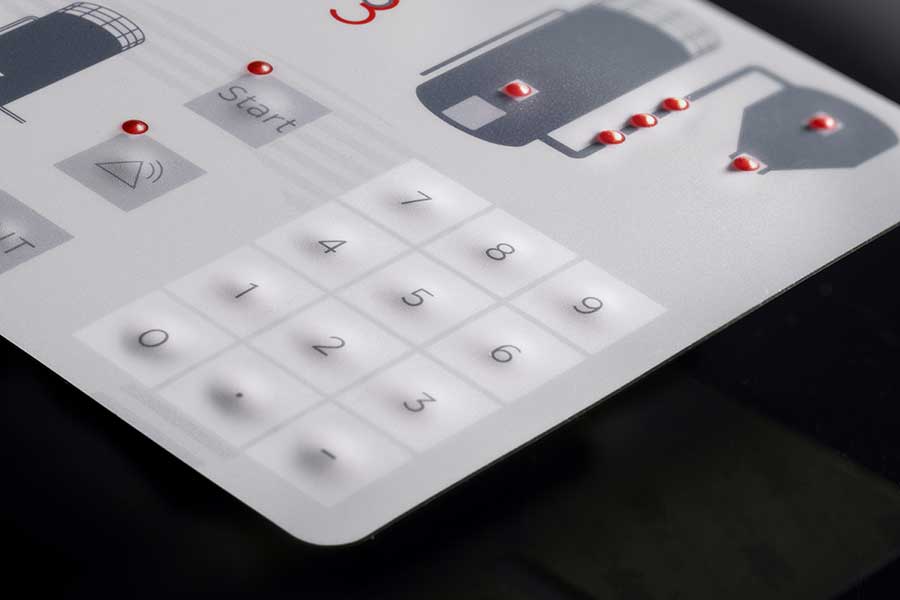Why Membrane Switches are Ideal for Durability and Performance
Understanding Membrane Layer Switches Over: The Key to Sturdy and Reputable Controls

What Are Membrane Layer Buttons?
Membrane layer buttons are a sophisticated service in the realm of individual interface innovation, integrating capability and layout flawlessly. These tools function as an interface in between users and digital systems, integrating several parts into a compact format. Usually built from versatile, thin layers of materials, membrane switches are designed to react to touch, making it possible for customers to connect with equipment and digital gadgets successfully.
The main aspects of a membrane button consist of a published circuit layer, graphic overlay, and a spacer layer that avoids unintended activation. The graphic overlay can be tailored to show brand identity or customer choices, improving aesthetics while guaranteeing use. Membrane layer switches are typically utilized in numerous applications, consisting of medical tools, customer electronics, and commercial devices, owing to their sturdiness and resistance to environmental variables such as dampness and dust.
Among the crucial advantages of membrane layer switches is their capacity to stand up to wear and tear, making them ideal for high-traffic settings. Additionally, they are light-weight and need minimal area, allowing for innovative styles in product growth. In general, membrane layer switches stand for a useful and reliable option for modern-day electronic user interfaces, marrying innovation with user-centric layout principles.
Just How Membrane Changes Job
The procedure of membrane layer switches over hinges on an easy yet efficient system that converts customer input into electronic signals. When an individual presses the switch, the top layer warps, permitting a conductive component in the circuit layer to make call with a corresponding conductive pad on the underside of the graphic overlay.
The design of membrane switches can vary, yet they typically integrate domes or responsive elements to provide comments to the customer, improving the general experience - membrane switch. The products utilized in membrane switches, such as polyester or polycarbonate, contribute to their durability and resistance to environmental elements, including wetness and dirt. In addition, the printed circuits are usually encapsulated, which shields them from wear and tear with time.
Advantages of Membrane Layer Switches

Furthermore, membrane layer switches are understood for their resilience. Created from durable products, they are immune to dirt, moisture, and physical wear, which substantially extends their lifespan contrasted to go to my blog conventional mechanical buttons. This toughness makes them especially appropriate for high-traffic settings and applications requiring longevity.
An additional substantial advantage is the ease of cleaning and maintenance. The smooth surface of membrane switches lessens dust build-up and is typically invulnerable to spills, making them ideal for setups that call for regular sanitization.
Additionally, membrane layer buttons offer a streamlined account, leading to a thinner layout that can be integrated into numerous gadgets without adding bulk. This function not just enhances the visual charm but likewise adds to an extra ergonomic product design.
Applications of Membrane Buttons
Flexible and easy to use, membrane buttons locate applications across a wide range of industries, consisting of clinical devices, consumer electronic devices, and industrial devices. In the clinical area, these switches are integral to devices such as analysis equipment, person tracking systems, and mixture pumps, where reliability and ease of cleaning are critical. Their ability to preserve and hold up against extreme settings functionality makes them ideal for such applications.

In consumer electronics, membrane buttons are made use of in products like microwaves, washing devices, and remotes - membrane switch. Their sleek layout enables intuitive interface, improving the overall individual experience while supplying resilience and resistance to tear and put on
Commercial devices likewise gains from membrane switches, specifically in control panels for machinery and automation systems. These buttons offer protection against dirt and wetness, making certain regular performance in tough settings. Additionally, their personalized functions enable producers to customize them to details functional requirements, improving performance and functionality.
Choosing the Right Membrane Layer Change
When selecting a membrane layer button, it is vital to consider different factors that affect efficiency and viability for particular applications. The key considerations include environmental problems, responsive responses, toughness, and style specs.
First, analyze the operating atmosphere; buttons subjected to wetness, chemicals, or extreme temperature levels call for specific materials to make sure longevity and performance. Next off, examine the need for responsive feedback. Depending on individual communication, some applications may benefit from a responsive action to validate activation, while others may favor a non-tactile layout for aesthetic factors.
Durability is an additional critical factor; membrane layer switches ought to be designed to withstand frequent usage, effects, and abrasion. Make certain the chosen switch can withstand the expected lifecycle, specifically in high-usage situations.

Verdict
In conclusion, membrane layer switches over serve as necessary parts in the design of long lasting additional reading and reliable control systems across various markets. The convenience of membrane layer switches allows for tailored options that fulfill specific operational needs, strengthening their relevance in modern-day innovation.
Membrane layer switches over stand for a crucial element of contemporary user interface style, mixing capability with strength in numerous applications.Membrane layer buttons are an innovative remedy in the world of customer interface modern technology, incorporating capability and layout flawlessly. Typically constructed from adaptable, slim layers of products, membrane layer buttons are created to react to touch, allowing individuals to communicate with machinery and electronic tools properly.
The layout of membrane layer switches can vary, but they frequently incorporate domes or tactile components to give responses to the customer, improving the total experience.In final thought, membrane switches offer as necessary elements in the design of trusted and sturdy control systems across various sectors.